This post may contain affiliate links. If you make a purchase through a link, I may receive a small commission, at no cost to you. These commissions help keep this website up and running, and I thank you for your support. Read my full disclosure here.
Disclaimer: This is not a sponsored post, I paid for this trip myself. All recommendations are my own.
We visited the popular Latvian coastal resort of Jūrmala on the Baltic coast as part of our two week self-drive holiday around the sights of Latvia. We had been staying in the charming medieval village of Kuldiga and from there we drove to the Gulf of Riga, just west of Latvia’s capital city, Riga. It was the end of summer on a hot and sunny Sunday. The coastline was buzzing as everyone in Latvia descended upon the beach up and down the coast to enjoy their final opportunity for sunshine before the onset of the freezing cold Latvian winter. The beaches along this coastline stretch for miles and spread across numerous coastal towns.
Jūrmala is Latvia’s most popular coastal resort thanks to its close proximity to Riga, only a 50 minute train ride away. On our way there we stopped off at Ragaciems, an ancient fishing village, where you can buy some freshly smoked fish. It was very busy when we arrived and we ended up having to parking at the nearby supermarket as there is limited car parking by the fish market. They sell a wide variety of smoked fish and they all looked delicious so it was difficult to choose. You can also dine at the local fish restaurant at the market as well, but we were keen to head to the beach, so we took our fish to eat at the apartment we had booked.

From the market we continued along the coastal road to Jūrmala. The Jūrmala city area has an interesting parking system. Basically, from 1 April until 30 September (the busy summer months) you need to purchase a 2 euro ticket to enter Jūrmala. This ticket allows you to park for free in Jūrmala during your stay. There is a pull over bay with ticket machines as you enter the city but there are also ticket machines in the city. You just need to ensure you that purchase the entry ticket by midnight the day you enter otherwise you will be fined. When purchasing the ticket from the machine you need to enter your car registration and then pay with cash or card. You don’t need to display your ticket since they monitor number plates by camera surveillance. If you drive out of the Jūrmala city area, then you need to pay it again when you re-enter Jūrmala. So for example, if you are staying in Jūrmala for several days, you only have to pay the entry fee once to enter. However, if you leave to go on a day excursion, then you will need to pay for another ticket when you re-enter the city area. There is also an app that you can purchase tickets through, but you had to register for a customer account and it wanted a Latvian address etc.. and it seemed more hassle that it was worth, so we just used the machines as we entered.
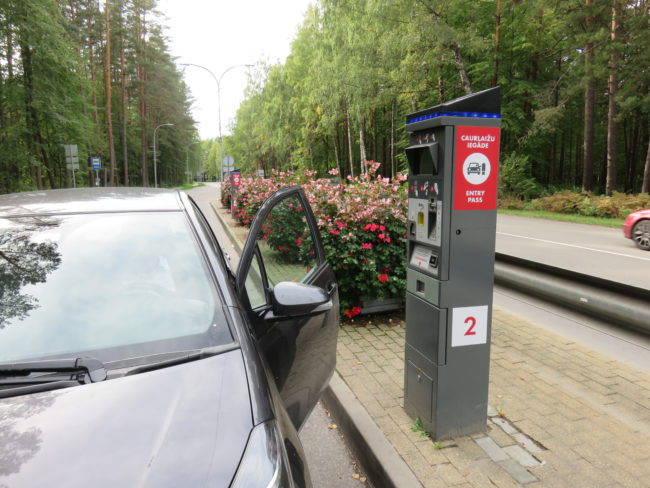
Jūrmala Beach
We were keen to join the rest of Latvia and spend our afternoon at the beach and thankfully our accommodation was able to accommodate an early check-in. Jūrmala’s wide beach stretches for nearly 26km, so there is plenty of room for everybody, even on a busy day. The sand is super soft, fine and white. The water is very shallow so you have to walk out a long way before the water finally gets deep enough to swim in. This makes it great for kids and the shallow water gets quite warm in the sun. I found that the best approach to swimming in the shallow water was lolling about like a dugong. If you walk further out you will get to the deeper water but it takes a rather icy turn because the Baltic ocean is very cold. I didn’t see any showers available, but the water is not particularly salty. There were some portaloos available to use.
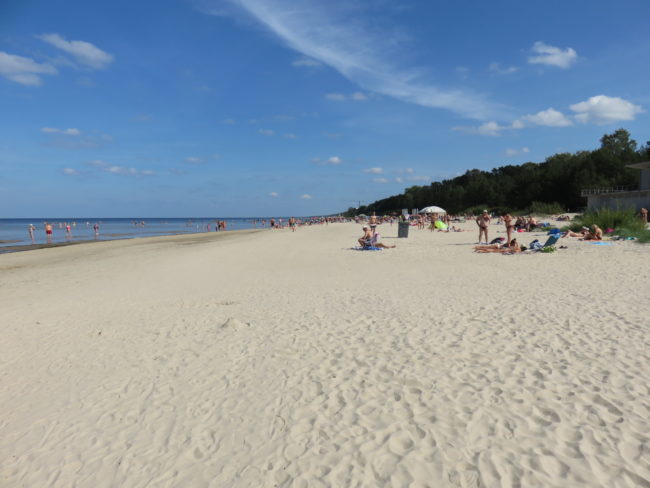
Along the beach were restaurants and bars selling food, ice creams and drinks. Near the town centre end of the beach they also host beach volleyball competitions which we sat and watched for a bit. However, I was glad we were staying near the quieter end of the beach as they have the music blaring all day in this area. The beach has a beautiful pine tree backdrop with paths running through it, so we also spent some time walking through these during our stay. However, make sure you wear plenty of mosquito repellent as this is where they all hang out.
Jūrmala City Centre
We had scheduled to stay 4 days in Jūrmala so we could get some time to relax and explore. The following day we walked up the beach from our accommodation to visit the main centre of Jūrmala. You know when you have reached the city area as there is a large bronze turtle that looks out over the beach. Here we found a long pedestrian street with restaurants, shops, bars and cafes. I didn’t find the shops particularly exciting, but there were some nice looking restaurants and cafe’s. We stopped at Bitīte (Jomas iela 63, Jūrmala, LV-2015, Latvia) for some morning tea as they have a range of yummy pastries and cakes.
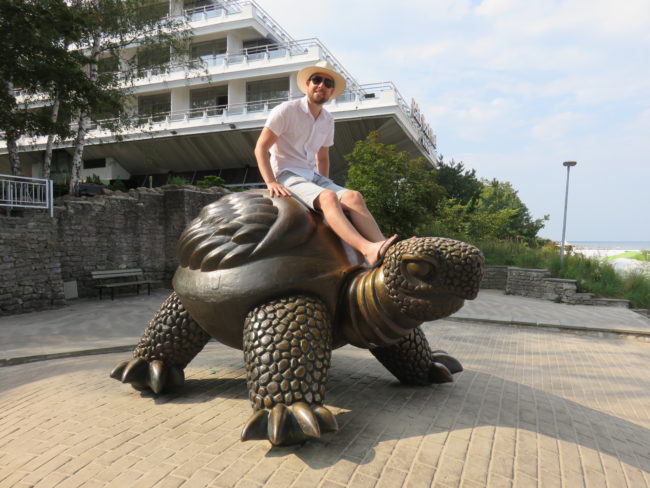
The city area is where all of the rich and famous of Latvia have their beach houses, so one of the attractions is just to walk through the streets admiring the beautiful houses and architecture that is unique to this city. Jūrmala’s wooden houses date from the 19th and first half of the 20th century in Art Nouveau style. Latvian’s have been spending their summers in Jūrmala since the 1920’s when they dubbed it the Baltic Riviera. There are many wonderful churches to see including Sv. Prince Vladimir’s Orthodox Church (Strēlnieku prospekts 26, Jūrmala, LV-2015, Latvia) at the end of the pedestrian street. Unfortunately it was in the process of being renovated when we visited so I couldn’t get a nice photo of it or go inside.
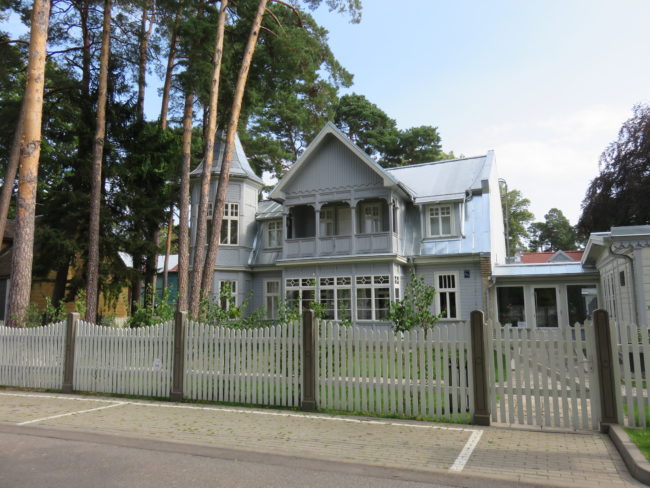
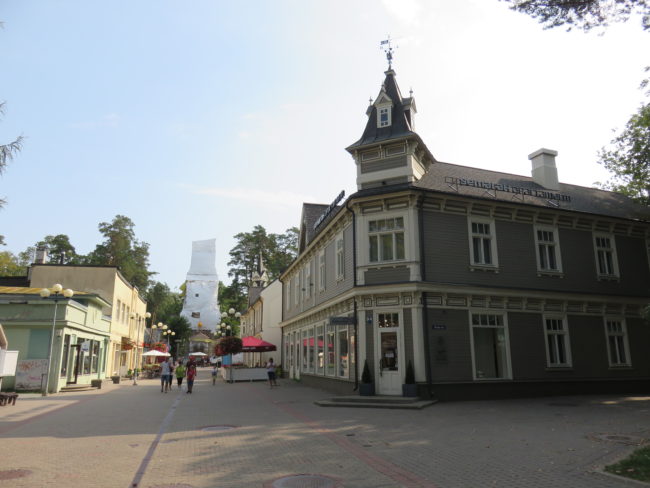
Ķemeri National Park
We spent a day exploring the Ķemeri National Park and the area around it. You can get a train from Jūrmala to the village of Ķemeri and walk to the sights and trails around that area. However, you will be able to get further by driving as we did. There are surprisingly few signs around the park, so take a photo of one of the information boards to use as your guide or download the map from the Ķemeri National Park website. During the summer there is an information centre at the train station where you can also hire a bike.
Ķemeri village
We headed out early in the morning as we wanted to see as much as we could in a day. We started at Ķemeri village where the former 1930’s Ķemeri hotel was once a popular first class mud and sulfur water bath house. We drove to Zaļās kāpas taka (Partizānu iela 44, Jūrmala, LV-2012, Latvia), a hiking trail through the woods on the edge of the village. There was a little bit of parking on the side of the road by the trail head. Along the trail there were locals collecting berries, mushrooms and herbs. The trail is long so you could spend most of a day walking the trail here, however, we wanted to explore more, so we headed back onto the A10 where we drove a short way up the road before turning left up Tīreļa taka to get to the raised bog. If you are on foot, there is a walking path that runs alongside the A10.

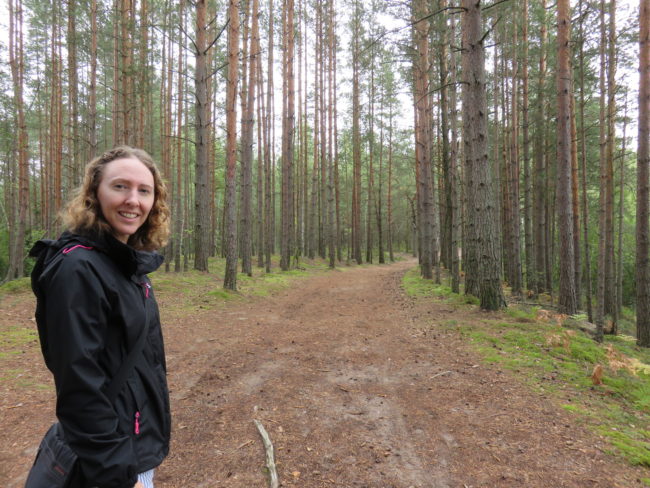
The Great Kemeri Bog
As you drive along Tīreļa taka there is an interesting cemetery in the woods on either side of the road. At the end of the road is the parking for The Great Kemeri Bog which costs a few euros that you pay to the attendant. There is a small visitor centre office here where you can get some maps and information about the area. From the car park it’s a short walk to the start of the bog board walk – there are also some basic toilets here as well.


There weren’t many other people visiting at the time, so it felt like we had the park to ourselves. It was so peaceful and quiet. The bog had an eerie beauty to it with reflective pools and the beautiful orange and rust colours of the plants. There are two paths to choose from, a shorter loop or a longer one. We took the longer loop track, but it doesn’t actually take very long to walk around and the path is flat and easy. Along the path was a raised look out that allows you to get a really great view of the area. The path exits a short way down from the main entrance.
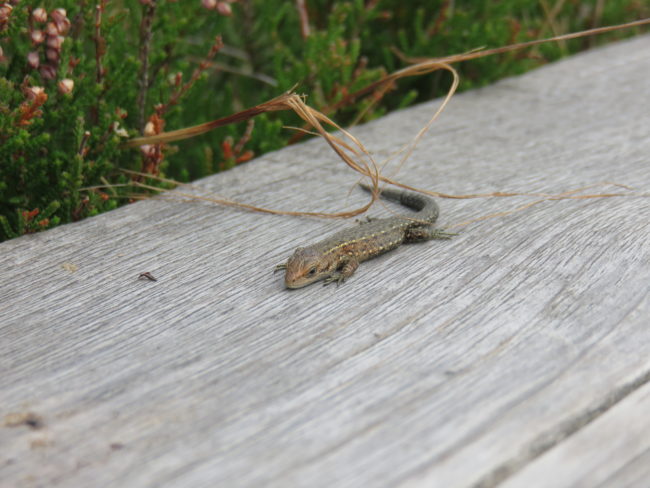

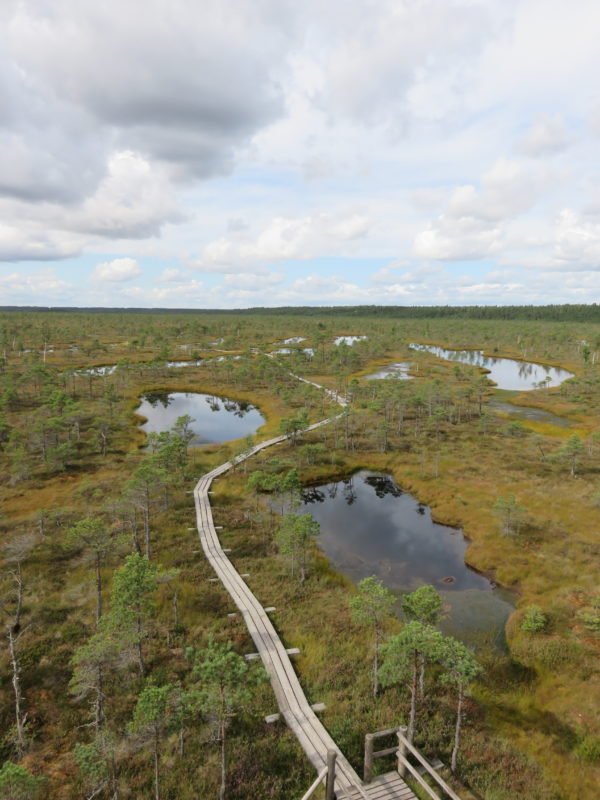
We were pretty hungry by now and there is not much to eat in this area, so we drove to a lovely local cafe called Smārdes Krogs (Smārdes krogs, Smārde, Smārdes pagasts, LV-3129, Latvia) on the A10, where we enjoyed some delicious potato pancakes. Across from the cafe is the road you head down to see the wild horses and cows in the nearby Dunduri meadows. The meadow is not well signposted, so I used the tourist map that I had downloaded from the park website to help guide us there. From the cafe on A10 we turned to Slampe and drove along the gravel road about 5.3 km up to a T junction where we turned left. Then after about 1 km we drove past a farm and from there it was about another 7 km along the road that leads to Dunduri meadows.

Dunduri Meadows
We first saw Latvia’s wild auroxen and horses whilst visiting Pape Nature Park. Wild cattle called auroch once roamed Europe, Asia and North Africa until the 17th century when they became extinct. The cattle at Dunduri are Heck cattle that have been bred with southern-European primitive breeds in an attempt to create the auroch-likeness. This breed of cattle was brought to the Dunduri meadows as part of a rewilding conservation aimed at restoring the land to what it once was. There are similar rewilding projects in other parts of Europe as well.
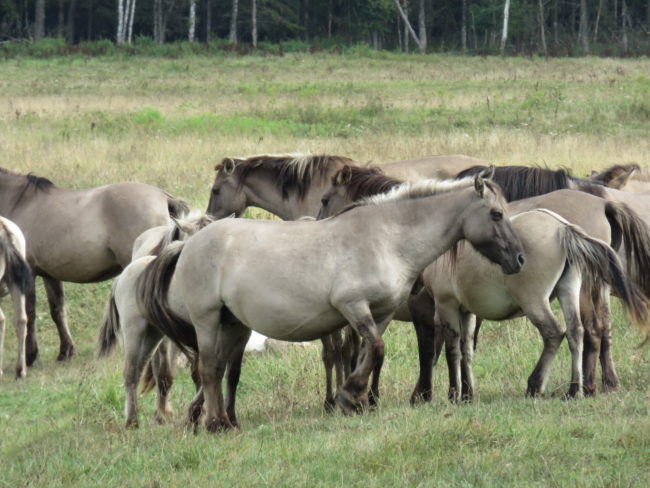
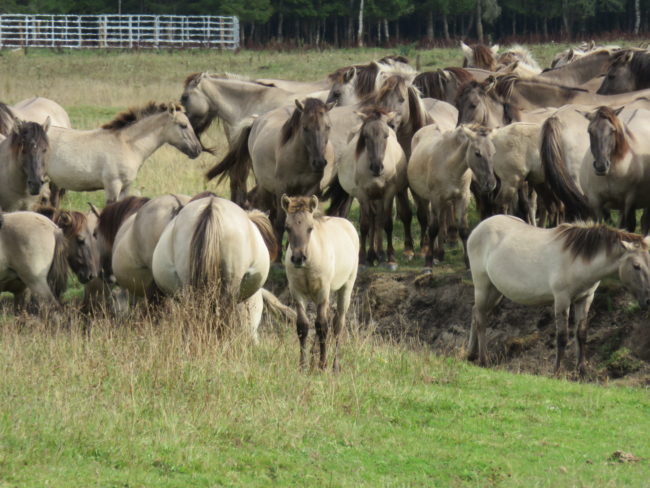
When we visited, I was surprised that no one else around. The meadow is fenced so you can’t walk across it, but you can see the horses and cattle from the towers. At the first tower we got to see the horses resting and swishing their tails in a large herd. Further down at the next tower we saw the auroxen having an afternoon nap. The calves were really adorable. The towers are great for bird watching as well and we got to watch some birds of prey gliding through the sky.
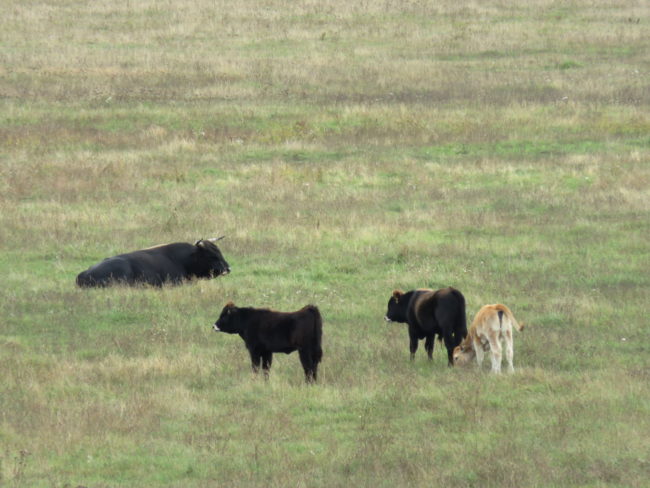
Black Elder Swamp
On our way back to Jūrmala we stopped off at Black Elder Swamp to walk the short loop wooden boardwalk. You can get to the swamp by foot from Ķemeri village, but if driving like we were, you head through the village along Tūristu iela and turn off at the sign ‘Meža māja’. There is free parking at the end of the road in front of the Kemeri National Park Fund building which is a lovely thatched historic building. If you are planning on visiting the swamp make sure you smother yourself in mosquito repellent. Our repellent had clearly started to wear off and we were eventually chased out of the swamp by a gang of mosquitoes thirsty for our blood.
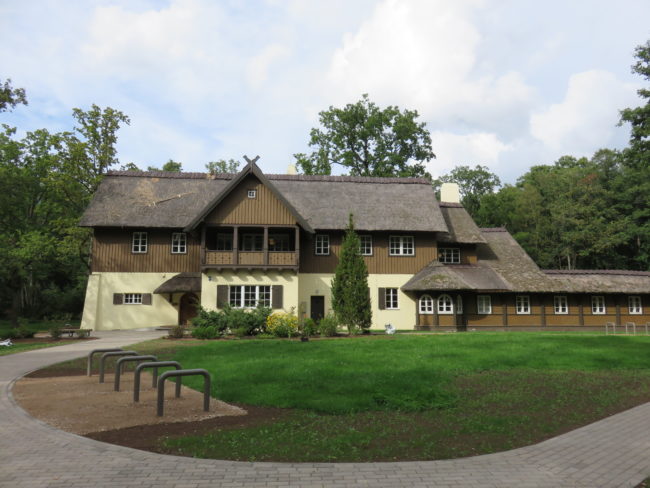
Ragakapa Nature Park
The following day we headed over to explore Ragakapa Nature Park. The park is within the city limits so you don’t have to pay to re-enter the city area. This end of town is where the super rich live. We headed to Bulduru prospekts, where we goggled at the stunning mansions, and then continued on down 36 līnija where the road ends at a car park beside a fancy restaurant that’s frequented by the local wealthy residents (the car park was full of very expensive cars). However, this is a public car park so even though the restaurant hires a parking attendant, it is free to park here. From the car park there is a path that leads into the Ragakapa Nature Park, a beautiful forest with walking and cycle paths through it. We walked out to the point called the Edge of the World which is at the mouth of the Lielupe river and is a peaceful spot.
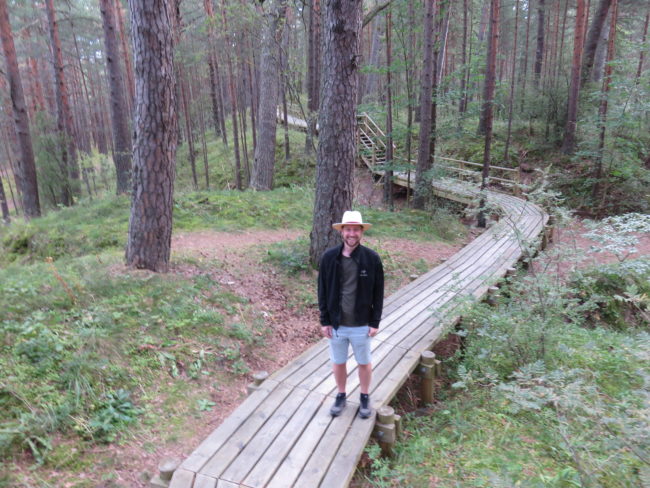
We then headed up along the beach, watching the birds pick their way through the seaweed on the shore looking for food. There were quite a few naked sunbathers along here sunning themselves in the dunes, so I think this may be the unofficial nude beach area. It wasn’t quite hot enough for me to join them.
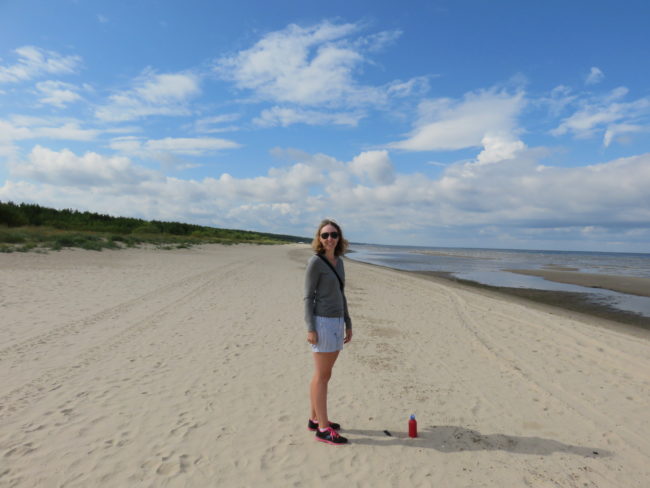

Accommodation Options in Jūrmala
Search available accommodation in Jūrmala
Budget
- Porto Marine – budget accommodation with views of the river that also features a pool
- квартира Jurmala, Dubulti – budget apartments by the beach
- Apartments in Jurmala – budget apartments with air conditioning.
Moderate
- Greenhouse Apartments – we stayed here and it was in a great spot a short walk from the beach with attentive hosts and a green philosophy.
- Tamara Suites & Apartments – modern apartments a short walk from the beach.
- Amber Sea Hotel & Spa – modern hotel with luxury spa
Luxury
- Villa Lido apartments – luxury apartments in a garden setting
- Wooden Villa – stylish apartments by the beach
- TB Palace Hotel & SPA – a very grand hotel and spa.
Practical Tips for Visiting Jūrmala
- How to get to Jūrmala: We drove to Kuldiga from Pape Nature Reserve, but you can get here from Riga on either bus or train. Check the schedules on the Latvian Transport website.
- How long should I visit Jūrmala for? We stayed for four nights so we could have time to both explore and relax on the beach. But if you don’t have much time you could enjoy a day trip to Jūrmala from Riga.
- Tourist Information centre: Lienes iela 5, Majori located next to the railway station, the bus stop and car park.
- Vehicle entry passes: From 1 April until 30 September the Jūrmala special zone entry fee is 2 EUR. Once you have paid to enter, you do not need to pay for another pass unless you leave. When you re-enter you will need to purchase another ticket. The ticket control is fully automatised, so you must enter your car registration number in the ticket machine before payment. The entry pass must be purchased on the day of entry, at any time until 23:59. The entry pass is valid for an unlimited number of times throughout the day of purchase. You can pay the entry fee through the website visitjurmala.lv or by using the Mobilly app, or purchase the pass at other ticket machines throughout the city:
- next to the RIMI store in Lielupe (by card or cash),
- at the Jūras and Turaidas street intersection next to Dzintari Concert Hall,
- in the Majori parking lot by the Tourism Information Centre on Lienes street 5 or
- next to Dubulti railway station.
- Cycling in Jūrmala: Jūrmala is very spread out and sprawls over quite a large area, so cycling is a good way to get around. There are lots of cycle paths to explore and because the beach is wide and flat, you can cycle along it for miles. You can find the cycling routes on the town website. There are a number of bike rental shops.
- Language: Latvian is the official language of Latvia. Latgalian, Ukrainian, Belarusian and Russian are also spoken. Most younger people we came across spoke excellent English, particularly at the tourist sites. But do try your hand at a few Latvian words:
- Hello – Sveiki (Svekee)
- Please – Lūdzu (LOO-dzoo)
- Thank you – Paldies (PUHL-dyehs)
- Yes – Jā (yahh)
- No – Nē (neh)
- Excuse me – Atvainojiet (UHT-vay-noh-yeht)
- I’m sorry – Piedodiet (pyeh-DOH-dyeht)
- Goodbye – Atā (UH-tahh)
- Where is the toilet? – Kur ir tualete? (koor eer TWAH-leh-teh?)
- Currency: Euro. Most places accepted card for payment, however, there are quite a few smaller places that only accept cash, so I recommend taking some cash with you.
- Tipping: Not required.
- Electricity: The electrical current is 230 volts AC. Wall outlets generally take the European two round prong plugs. However, you are better off purchasing a worldwide adaptor that can be used in Latvia as well other countries. At least then you can potentially get some further use out of it on future vacations. If you’re taking a number of electronics with you, then I would recommend purchasing a couple of these adaptors.
- Driving in Latvia: In Latvia they drive on the right hand side and all vehicles must have their lights on day and night. In built-up areas speed limits are 50 km/h and 20 km/h in residential areas. On normal roads car speed limits are 90 km/hr and 100km/hr on dual carriage ways. There are a lot of speed cameras in Latvia and they are hard to spot as they are a modern slim grey design. There will be a warning sign directly before it, but they are easily missed. They carefully monitor speeding in Latvia as we witnessed a number of drivers being stopped by police, so watch your speed.
- Navigating: Use Google’s free Offline Maps which allows you to access free maps for navigating that can be used offline i.e. you don’t need WIFI, data, or roaming to be able to use them. Follow this detailed guide on how to use Googles Offline Maps.
- Using your phone as a GPS will drain your battery quickly, so use a portable battery charger which you can use to charge your phone and any other USB chargeable devices.
- If you prefer a paper map, then purchase a Latvian road map before you go. At least it’s reliable and won’t run out of battery or malfunction like the electronic options!

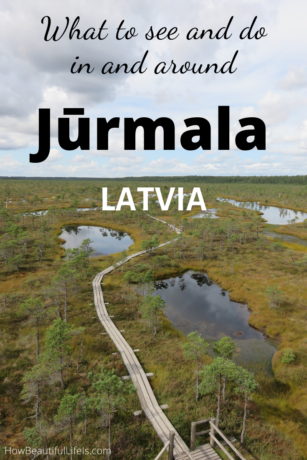
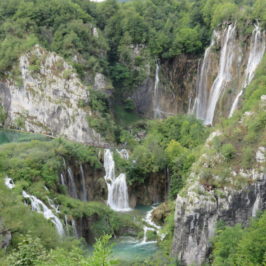
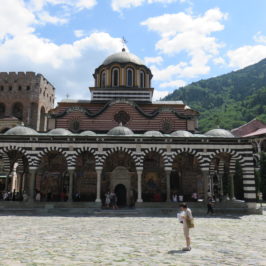
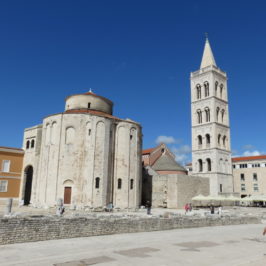
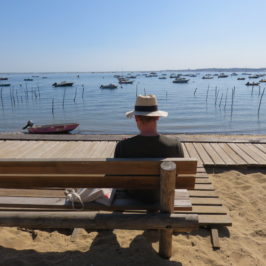


Leave a Reply